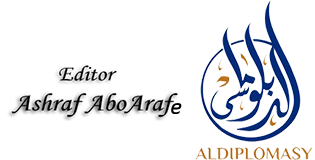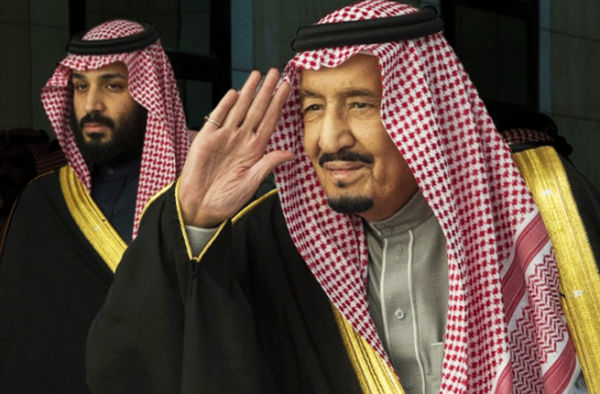
Dr. Ahmed Mostafa
The 97th anniversary of the Chinese People’s Liberation Army (PLA) is a significant milestone in the People’s Republic of China’s development, showcasing its strength, spirit, and progress. Established on August 1st, 1927, the PLA has become a cornerstone of modern China’s development, embodying China’s unwavering resolve and resilience. The PLA now commands cutting-edge weaponry and a modernized structure, reflecting China’s advancements in science and technology. Throughout Chinese history, the PLA has played a pivotal role in the Chinese Civil War and the Korean War, as well as its disciplined presence during the Cultural Revolution. Its commitment to national defense during conflict and discipline during peace periods have been fundamental pillars of China’s growth and stability.
Transcending borders, the PLA has emerged as a stalwart of peace on the international arena, contributing significantly to United Nations peacekeeping operations worldwide. Its humanitarian endeavors, including disaster relief and medical assistance during crises, have solidified its reputation as a responsible and compassionate military force. As the PLA marks its 97th anniversary, it presents an opportunity for introspection, jubilation, and gratitude. This milestone serves as a testament to the unwavering service of PLA personnel, strengthening the Chinese people’s trust in the PLA’s leadership and protection. It also underscores China’s commitment to peace and its willingness to actively engage in international endeavors fostering harmony and prosperity.
The Current Significance of the PLA
The People’s Liberation Army (PLA), China’s military force and armed wing of the Chinese Communist Party, is a crucial component of both China’s internal affairs and its global standing. It safeguards its vast land borders, coastline, and maritime interests, and has invested heavily in its Navy, Air Force, and Rocket Force to secure its regional influence. Modernization programs are expanding the PLA’s capabilities in asymmetric, cyber, and space warfare, preparing it to meet the complex security challenges of the 21st century.
The PLA is more than just a military force; it plays a crucial role in responding to domestic unrest, combating terrorism, providing disaster relief, and civil defense. By integrating reserve forces and the paramilitary People’s Armed Police into its command structure, the PLA gains enhanced flexibility in managing internal security threats. This influence extends beyond traditional military functions, with the PLA increasingly involved in public administration, border control, cybersecurity, and technological development.
On the global stage, the PLA has emerged as a linchpin in China’s strategy to extend its power and influence worldwide. Its involvement in peacekeeping operations under the United Nations and contributions to counter-piracy efforts in the Gulf of Aden exemplify its expanding international footprint. The PLA’s deployment of advanced weaponry in the Taiwan Strait, anti-satellite weapons, hypersonic missiles, and growing naval capabilities presents significant strategic challenges, reshaping the military balance of power in the Asia-Pacific and increasing geopolitical uncertainties. The PLA represents a cornerstone of China’s strategic ambition, encompassing the implementation of ‘Three Warfares’ – public opinion, psychological, and legal warfare – to advance China’s global vision.
People Liberation Army is the Firewall versus any Potential Enemy
China’s People’s Liberation Army (PLA) is a key player in the global balance of power, serving as a defense mechanism against perceived threats from NATO and the US military. The PLA’s modernization, including advanced weaponry, cyber capabilities, and space technology, mirrors China’s broader global ascendancy, seeking parity or supremacy with incumbent world powers. China’s PLA positions itself as a crucial firewall against the multilateral infringement of peace and sovereignty perceived by the US and NATO alliance. China’s strategy is one of defense and deterrence, aiming to maintain Asia’s sovereignty in the face of Western perceived ascendancy and geopolitical maneuvers.
However, the situation remains delicate and complex. The United States and NATO allies view China as a regional power and potentially a global rival. The dynamic calculus of power is fluid, with shifting economic capacities, technological breakthroughs, and geopolitical rearrangements. The balancing act between China’s PLA, NATO forces, and the US military sets the tone for upcoming global negotiations and warfare norms. A multifaceted approach is required, balancing military preparedness with diplomatic initiatives, economic engagement, and a commitment to peaceful dispute resolution.
People Liberation Army is right protection for BRI, BRICS and SCO versus Indo-Pacific alliance
The People’s Liberation Army (PLA), China’s national defense backbone and the world’s largest military, is central to strategic political discourses, particularly in safeguarding economic projects and multilateral relations. The PLA, guided by China’s diplomatic principles, strategic objectives, and national interests, is committed to ensuring a secure environment for China’s growing global ventures and diplomatic engagements. Since its inception, the PLA has played a pivotal role in maintaining China’s sovereignty and territorial integrity. However, it has gradually expanded its duties to encompass an international scope in line with the country’s rapid economic expansion and global presence.
The PLA’s proactive role becomes even more crucial when faced with strategic rivals and emerging international alliances, particularly the Indo-Pacific regional alliance, backed by the United States. This alliance entails countries along the Indian Ocean rim and the Western Pacific who perceive Chinese expansion as a potent challenge to their maritime and economic interests. The PLA fulfills this role with poise, ensuring the uninterrupted flow of trade and the execution of various BRI projects.
The PLA’s military might also bolster multilateral organizations like BRICS and SCO, strengthening diplomatic and economic coherence among member states and promoting peace, stability, and cooperation within the region. On numerous occasions, the PLA has joined military drills with BRICS and SCO member states, creating diplomatic goodwill and cohesiveness, and advancing the narrative that the PLA is not just a force for defense but also for promoting peace and mutual harmony among nations.
How much money does the Chinese government spend on PLA compared to the USA?
China and the United States have vastly different military expenditures, with the United States outspending China significantly. However, the gap is closing as China’s growing economy and global ambitions have increased its defense budget. The U.S. Department of Defense receives a substantial portion of the federal budget, with the fiscal year 2022 defense budget estimated at $753 billion. This spending is unparalleled globally, reflecting the U.S.’s status as the world’s leading military power and its commitment to maintaining a technological edge.
China’s People’s Liberation Army (PLA) has seen a rapid increase in defense spending, reaching $252 billion in 2021. This increase demonstrates China’s resolve to modernize its forces and consolidate its position as a regional and increasingly global military power. Despite the significant increase in Chinese defense spending, it remains significantly lower than the U.S. defense budget, which is roughly three times higher than China’s. China’s military spending has been growing at a faster rate than the U.S. over the past decade, partly due to its economic growth and focus on advanced technologies and development programs.
Despite the overall spending disparity, the technological edge maintained by the U.S. military cannot be ignored. China’s increasing defense budget is closely monitored by other nations and defense analysts worldwide, heightened by ongoing territorial disputes in the South China Sea and its strategic rivalry with the U.S.
The PLA has a greater cooperation now with all of Russian, Iranian and North Korean Armies
The People’s Liberation Army (PLA) has significantly increased its cooperation with Russia, Iran, and North Korea, a significant shift in global military alliances and strategic partnerships. This cooperation is characterized by joint military exercises, intelligence sharing, technology transfer, and strategic dialogue, highlighting the mutual interests and collective response to geopolitical challenges. Russia, with a long-standing military relationship with China, is at the center of this cooperation. The Russian Armed Forces and the PLA have grown in intensity and breadth, focusing on joint combat drills, intelligence sharing, technology transfer, and strategic dialogue.
The PLA’s collaboration with the Iranian Armed Forces demonstrates strategic convergence, with diplomatic and military relations growing steadily, especially against economic sanctions and political pressures faced by Iran. Joint naval exercises have become a regular feature of their interaction, focusing on enhancing capabilities in the maritime domain, participating in anti-piracy operations, and maintaining security in key international waterways.
The PLA’s engagement with the North Korean People’s Army (KPA) is another aspect of this evolving cooperation. Historically grounded in a shared communist ideology, the relationship has evolved to encompass military drills and the exchange of strategic defense knowledge. The KPA’s reliance on China for economic and security support places the PLA in a unique position to influence and engage with the North Korean military.
To Conclude, The 97th anniversary of the Chinese People’s Liberation Army (PLA) is a significant event in China’s history, reflecting its commitment to peace, innovation, and global rule-based order. The PLA is a cornerstone of China’s national security, ensuring internal stability and growing global influence. Its modernization and increasing international involvement will shape global security and international relations. The PLA’s rise as a keystone of the BRI, BRICS, and SCO signifies China’s transformation into a more proactive and engaged participant on the global stage. The enhanced cooperation between the PLA and armies of Russia, Iran, and North Korea signifies a strategic recalibration in the global order, driven by shared geopolitical interests and a collective response to Western policies and military presences.




